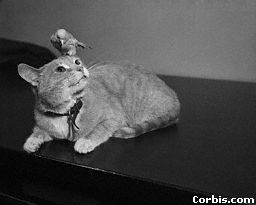| Hello! Welcome to this class about Learning Styles. You can use this web site to learn more about how you learn. Indirectly, this time will help you improve your study skills and vocabulary. Your test-taking will also improve. When you feel a genuine interest in a subject, your brain sends you powerful positive chemicals that turn into positive mental attitude. PMA >>> Look below: LSQ PMA PMA Learning styles Lets think of opposites: If you dont know some of these words, you can try looking them up and asking the instructor. You are likely to be more of one kind of thinker than another. Lets find out your style and then work to use the advantages of your style. Why do boys tend to be good at finding the answer to a math problem (which has ONE answer), while girls are better able to tell stories? Most girls can tap into their right brains much more quickly than most boys. Most girls are equipped to search for details that might not be specifically related to the problem at hand. Why? Think about hunters and gatherers. (This is the wonderful comedy routine developed by Rob Becker.) Hunters look at one think until it is captured. The best hunters are not quickly connected to their right brain, which sends information about their emotions. When a good hunter sees a snake, he doesn't shout or gasp. That's because there's a thin connection between the RIGHT side of the brain (where the signal about the snake was sent) and the LEFT side (the verbal and logical side of the brain). The LEFT side of the brain in the hunter receives just enough warning about the snake but the hunter remains quiet. Consider the Gatherer. She is looking at bananas, strawberries, under leaves, apples, looking for food, and then she sees a snake. AAAAH! she warns the others who are looking for food. If she is bitten and killed, the others in the gathering party know where to find her and know where to pick up the food that she dropped. They can go back to the clan and take care of the orphaned children. Shouting and acting quickly on the emotional signals fo the right brain are important for women. Most women have a thick corpus callosum between the right and left hemispheres of the brain. Most men have a thin corpus callosum. The men receive fewer signals per second than the women from one side to the other. When you ask a guy, "How are you feeling?" the guy has to go over to the right brain and look around. If he sees no storms or hurricanes, then he comes back to the verbal left brain and says, "Fine." Ask a woman how she feels, she is instantly able to recount how her family is doing and how that makes her feel and what is coming in the future and what she worries about...because that's what evolution has given most women: the ability to quickly tap into her emotional concerns for the well-being of her family group. Men typically use 2000 words each day. Women on average use 5000 words each day. Source: Rob Becker. (I believe he quoted research that counted the variety of words, not the absolute number of words.) It is useful to list a number of opposites. Your learning style can be found by asking, "Do I converge or do I diverge? Do I like the certainty of one answer or do I wonder if there are other conditions that might make the answer different in different situations?" Right-brain emotional Left-brain logical Converge Diverge Perceptive Just the facts Carl Jung, the psychologist, believed that people are driven be certain urges or natural ways of doing things: you are either directed mostly inward or outward. Here are some of the other "drives" or tendencies (and their opposites) that his disciples developed. Thinking (T) Key words: impersonal truth cool tough-minded Extraversion (E) Key words: outer world people action breadth Introversion (I) Key words: inner world ideas reflection depth Sensing (S) Key words: facts details experience present Intuition (N) Key words: symbols pattern theory future Perceiving (P) Key words: flexible open adaptable spontaneous Judging (J) Key words: structured decided organized scheduled Feeling (F) Key words: personal value warm tenderhearted Thinking (T) Key words: impersonal truth cool tough-minded www.knowyourtype.com is a good web site to get more information about this system of "types." There is a total of 16 TYPES: ISTJ ISFJ INFJ INTJ ISTP ISFP INFP INTP ESTP ESFP ENFP ENTP ESTJ ESFJ ENFJ ENTJ Visual Linear (thinking in order) Sequential Multiple Intelligences is a system of learning styles that Howard Gardner of Harvard University has described. You can learn more if you do a google search about "multiple intelligences Gardner." Other styles include: musical learning methods, social learning Gardner even believes there's a spiritual learning style. Can you change or improve your learning style? Some people suggest that you can. I know that my learning style has expanded to INCLUDE the linear or sequential style. I also know that when I make a presentation to a client or when i tell a story, some of the people in my audience want the beginning, middle and end and perhaps even an outline: Tell them what you are going to tell them, then tell it to them in detail and with stories, and finally tell them what you told them. Today I want to give you three ways to improve your score on the SAT. 1. 2. 3. SO, to review, we have three ways to improve the score on our SAT. Can anyone name the three ways? SO: we know that it's possible to copy the style of someone else ("How would Mrs. Hopkins describe this procedure?") We don't have to LIKE how this is done, but we can copy the style and get a better score on the test. CHANGE IS POSSIBLE: If you change the way you dress, if you change your hair style and change your clothes, these changes help you change your behavior. When I wear a uniform or a jacket and tie, I feel more like a "real teacher" than I do when I wear a t-shirt. Change your handwriting, change your personality, change your life. For someone with ADD, a few hours of making choices about handwriting is a good use of time. We're going to use our handwriting for the rest of our lives. Let's choose a style that fits our personality and that communicates with the world. Heres how I used to write when I was 14 years old >>>>>>>>>>>>>>>>>>>>>> Heres how I write now. >>>>>>>>>>>>> I read a book called Change your Handwriting, Change Your Life. The basic recommendation was to make the letters clear and easy to write and your personality will be more sharply defined. It worked for me. Here's what someone on a book review page wrote about the book... Reviewer: An Amazon.com Customer Psychological script analysis or graphology has competition and opposition from many quarters. Psychometric testers claim greater accuracy for recruitment and compatibility studies. Forensic questioned document examiners claim greater scientific rigour than court graphologists. Human rights groups attack graphology as an invasion of privacy. Graphology may upset people because it is considered either insufficiently accurate or because it is too analytical, negative and invasive. But there is one area where an understanding of handwriting has unique possibilities and that is graphotherapy. It is the subject of Vimala Rodgers's Book "Change Your Handwriting, Change Your Life". Human beings naturally tend to see themselves and their place in society from their own point of view. Graphotherapy helps people to understand their innermost feelings, fears and moods, yet at the same time become more sensitive to others' feelings. Innately we all need to move forward and grow. How to do this on one's own is often not easy. Here Vimala Rodgers's book can be a great help. It outlines a way for readers to audit their attitudes. It presents handwriting exercises which act as focused meditation, helping the reader in such areas as listening, patience, resentment, forgiveness and gratititude. Subsequently, handwriting analysis is able to monitor the extent to which this focused meditation through graphotherapy has changed the way the reader is living. Qualified graphologists will see this book as a useful addition to their library on stroke analysis, but it is much more than this. The book contains a whole-life, uplifting philosopy which takes it outside the specialised field of graphology. That's what a reviewer wrote about this book. For some students, this could be the most important information on this page...because it will give you the freedom to experiment with your handwriting and make it more legible! Then there is the popular "learning difficulty" called ADD, or Attention Deficit Disorder. I prefer to call it... Variable Attention Syndrome (VAS) There are many jobs and careers that are made more challenging when a person is equipped with VAS. Yes, I like to write "He comes equipped with VAS," the way we say that a car is equipped with air conditioning or a GPS device. A friend, Marshall Thurber, says that "Alfred Do-Good is with me today!" when he has a particularly overwhelming day, filled with details. Thisis a helpful insight. Many people with ADD have an urge to do good things for others...and often get lost in helping other people in so many directions that they don't get down to doing the drudge work that they need to do for their own life. To see how people with ADD or VAS get on with their lifes and adapt to the condition, visit a web stie about a workshop that Marshall created in 1979. www.excellerated.com If you are interested in learning more about Living with ADD, visit the www.addkit.com. It's a good way to assist people who are equipped with ADD. This web site will grow. Please send your questions to S. McCrea at mistermath@comcast.net and we'll expand this page to answer your questions. Signup for A Word send to Your Cell Phone Return to INDEX of Teachers To Teachers dot com The more times you answer "YES", the more you use the right side of the your brain. The more RIGTH you are, the more you need non-linear, ALTERNATIVE teaching methods. Spelling and details are less important to you, the focus should be on creativity and seing the "big pictures." 1. Do you prefer to think ALONE so you can concentrate (rather than think out-loud in a group of students)? 2. Do you use PICTURES to remember things instead of words? 3. When someone asks you to spell a word, do you have an imaginary whiteboard in uyour mind where the letters appear? 4. Do you enjoy puzzles and mazes? 5. Do people think that you are maturing later than other people? Do you think you are "blooming" later in life than other people? 6. Can you "see" objects in three dimensions? Can you rotate an image of a six-colored cube or beach ball in your mind, seeing each side of the cube or beach ball? Can you see it from the top, from the bottom and from the size? 7. Do you like making something "perfect"? Do you avoid trying something new because you think that you might not be good at it? 8. When you are in a city or on a street for the first time, can you find your way without asking for directions? 9. Do you like to daydream? Is it common that you find yourself thinking about something else instead of focusing on what you are doing (daydreaming while you drive or walk)? 10. Do people tell you that you are good at deceiphering people? Can you look at someone you recently met and make accurate conclusions about the person? Are you intuitive? 11. Can you remember a face better than a name? 12. When you open a box that contains a "assemble-it-yourself" cabinet or toy, do you ignore the directions and try to build it? 13. Do you have very good or sensitive hearing? 14. Do the labels in your clothing bother you? Do you cut out the labels? The more YES, the more RIGHT-SIDED. These questions are adapted rom a list in a book called Right-Brained Chidren in a Left-Brained World by Jeffrey Freed, MAT, and Laurie Parsons, Simon and Schuster. |
| This page is dedicated to my niece. I asked her, "Why do boys and girls learn differently?" She replied, "Well, I know that boys find math easier, usually, and girls find reading and writing easier. But nobody explained why." This is one set of theories that explain why. This page is based largely on the popularization of brain structure, popularized by Dr. Nancy Snyderman and comedian Rob Becker. As a teacher, I greatly appreciate their contributions to society. Their work has helped hundreds of teachers to understand how we learn and how students learn and how to better present material so that students can pick it up more quickly. If you find this interesting, please learn more about Rob Becker at www.cavemania.com. Do a google search on Nancy Snyderman. For some people, it's important to be VISUAL and make the important words in a paragraph larger. This is annoying to sequential people who like order. Please excuse me...I'm writing for the VISUAL AND ACTIVE learner. Rob Becker www.cavemania.com This guy should receive a TEACHER OF THE DECADE award for the humorous insights he delivers. He shows how to turn scientific discoveries and research papers into "news we can use." Learning Styles Quiz is at the bottom of this page. |
| www.Teachers To Teachers.com Learning Styles |
 |
| How many ways can we use these letters? Either I or E Either S or N Either T or F Either P or J Introvert (I) or Extravert (E) Sensing (S) or INtuitive (N) Thinking (T) or Feeling (F) Perceiving (P) or Judging (J) Most of us are mostly one or the other. For example, as a teacher, I am mostly Extravert, mostly Sensing (if you don't show it to me, I won't see it) mostly Thinking (so I'm not in touch with my feelings, usually) and mostly Judging (I've seen this sort of student before, so this one is probably liek the others.) These are habits and ways of viewing the world that i need to work through in order to also be able to feel, perceive, listen to my intuition and look inward to find the information I need to give my students. Do you see why these learning styles are helpful for you to know about? Most people are operating with these types of behavior, so you can use this information to try to reach them where they are more comfortable. Some students DON'T want to work with a partner. Okay, I don't force them. |
| Sample of writing will be posted here |
| Perhaps the most valuable moment in a teacher's interaction with a student is the moment when the student hears the answer to a question that the student is carrying with him or her. The teacher often doesn't know what the question is, so the good teacher is always open to sharing a wide variety of information, hoping that something will spark an interest in the student. In my classes of math, I mention literature, movies, science, art, music... I don't know what the student is interested in, so I try to relate the subject to something that you find interesting... and I know that we have ALL had to tackle the difficult choices, such as "Is it really worth the effort to learn the names of capitals of every country in the world?" or "Should I really take time to learn something about every major war that took place since 1500?" I had to learn the difference between the Central powers and the Axis powers. Maybe I can help you with my tricks or mnemonics (from Mnemonia, the Muse of Memory). There are dozens of other useful things to know and you can visit WHAT SHOULD STUDENTS LEARN? -- a web site devoted to information that students have told me that they wished they had learned in school. What Did They Teach You In School? Why is this web page written in a long thin coumn? This is the "Reader's Digest" style. Most people have a hard time reading a wide column, even in an average book. The Reader's Digest magazine developed the narrow column to help people read faster. This is one of several observations that has led to the "Easy Reading Writng Style Guide" prepared by stevemccrea.com In general, this style of web site is very disorganized and random (my firends who are sequantial tell me that I need to organize the web sites better), so a sequential or LINEAR web site is under development. Until then, please write to me with your questions and I will gladly share what I know about these subjects. |
 |
 |
 |
 |
 |
 |
 |
| Are you still reading and following what I'm saying here? |
 |
| Alfred Do-Good (He needs a hair cut and he appears very lazy, but he's a loyal friend and very focused when he finds something that interests him.) |
 |
 |
 |
 |
 |
| Sample of writing will be posted here |
 |
 |
 |
 |
| How can these animals help us to think about different ways of learning and different ways of expressing our opinions? |
| What are these pictures for? What message do these pictures communicate to the reader? Well, they are visual reminders that many readers are not SEQUENTIAL and many students need pictures to keep them interested. So if you find a connection between the words and the photos, bravo! LEARNING STYLES QUIZ appears below. |
| Hey, stop looking at me and get back to reading. |
| Yeah, what he said! ...stop looking at me and get back to reading. |
| People who are "right-brained" tend to have high expectations for themselves. they usually "put themselves down" and they don't usually write very clearly. They are generally not good with details... |
| Informatin about Emotional Intelligence... These reviews were pulled from the www.bn.com web page for EI: Annotation "...explains why empathy, self-awareness, and self- discipline is essential to success and positive human interaction." From the Publisher Is IQ destiny? Not nearly as much as we think. This fascinating and persuasive program argues that our view of human intelligence is far too narrow, ignoring a crucial range of abilities that matter immensely in terms of how we do in life. Drawing on groundbreaking brain and behavioral research, Daniel Goleman shows the factors at work when people of high IQ flounder and those of modest IQ do well. These factors add up to a different way of being smart--one he terms "emotional intelligence." This includes self-awareness and impulse control, persistence, zeal and self-motivation, empathy and social deftness. These are the qualities that mark people who excel in life, whose relationships flourish, who are stars in the workplace. Lack of emotional intelligence can sabotage the intellect and ruin careers. Perhaps the greatest toll is on children, for whom risks include depression, eating disorders, unwanted pregnancies, aggressiveness and crime. But the news is hopeful. Emotional intelligence is not fixed at birth, and the author shows how its vital qualities can be nurtured and strengthened in all of us. And because the emotional lessons a child learns actually sculpt the brain's circuitry, he provides guidance as to how parents and schools can best use this window of opportunity in childhood. The message of this eye-opening program is one we must take to heart: the true "bell curve" for a democracy must measure emotional intelligence From The Critics Publisher's Weekly This international #1 bestseller, which spent a year on PW's list, explains why EI can be more important than IQ. (July) Library Journal Scientific data emerging from studies using new brain imaging technologies have yielded fresh understanding of how emotions work and, argues the author, suggest ways to regulate the more negative emotions responsible for the horrendous acts of violence that are the stuff of daily headlines. The book calls for universal adoption of educational curricula that teach youngsters how to regulate their emotional responses and to resolve conflict peacefully. Along the way Goleman summarizes much of the best psychological work of the last few decades on such topics as the importance of learned optimism, the theory of multiple intelligences, the role of innate temperamental differences, and the importance of emotional intelligence in marriage, management, and medicine. Based on good empirical data (unlike many popular psychology books), this fine example is recommended for academic and larger public libraries.Mary Ann Hughes, Neill P.L., Pullman, Wash. Booknews Goleman, psychologist and science writer for The New York Times, explains how the rational and emotional work together to shape intelligence, using intriguing new information from neuroscience and psychology of the brain. Annotation c. Book News, Inc., Portland, OR (booknews.com) A reviewer, A reviewer, April 13, 2004, Great!!! They should take this books theory into account in all schools everywhere. There are little Picassos, Hemingways, and Einstiens out there who are genius in their own area of strength, but yet never make it because they couldn't get passed their weakest required class within their curriculum. We need to focus on individual curriculums for each student. People are individuals. And many are getting lost. Also recommended: The Little Guide To Happiness Lyno Sanchez, an operations executive in LA, January 12, 2004, Great and Very Long Emotional intelligence was a thought provoking book that I've introduced to many of my friends. It's a great way to frame an important side of life. There's a new one you should get to, called the Emotional Intelligence Quickbook. I found it on Amazon and it's much shorter, and the conversational style is easy to follow. Both books are great and the Quickbook is the one I'm giving away now because it's fast and easy to read. Also recommended: The Emotional Intelligence Appraisal The Emotional Intelligence Quickbook A reviewer, A reviewer, September 24, 2003, Already of historical significance! This book was only written a few years ago but it is already a classic! It opened the eyes of our culture to another side of human consciousness anf functioning. Although we still have a long way to go in developing a full understanding of the emotional aspects of ourselves, this book provided us an wonderful opportunity to move in that direction. The book that has taken us one more step in that direction is 'The Ever-Transcending Spirit' by Toru Sato. Though Goleman's book helped me become more aware of this aspect of myself, reading Sato's book has increased my emotional intelligence level immensely! Both books are essential readings for the evolution of our consciousness. Also recommended: The Ever-Transcending Spirit by Toru Sato A reviewer, A reviewer, February 20, 2003, First rate book for acknowledging the value of emotions I like Daniel Goleman's explanation of emotional intelligence. As so many of our decisions are emotionally based, it is imperative that we understand the value of emotions and how to intelligently deal with them. My favorite book on emotional intelligence is Optimal Thinking -- How to Be Your Best Self by Rosalene Glickman, Ph.D. She offers a roadmap to deal with disturbing emotions, and a roadmap for specific emotions. She shows you how to use emotions as optimization signals. If you read both books, you'll have it all. Also recommended: Optimal Thinking -- How to Be Your Best Self by Rosalene Glickman, Ph.D. Daniel Goleman, Ph.D., is founder of Emotional Intelligence Services in Boston, Massachusetts. For twelve years he covered the behavioral and brain sciences for the The New York Times, and has also taught at Harvard (where he received his doctorate). In addition to Emotional Intelligence, his previous books include Vital Lies, Simple Truths; The Meditative Mind; and, as co-author, The Creative Spirit. Feel free to visit www.bn.com for more information. |